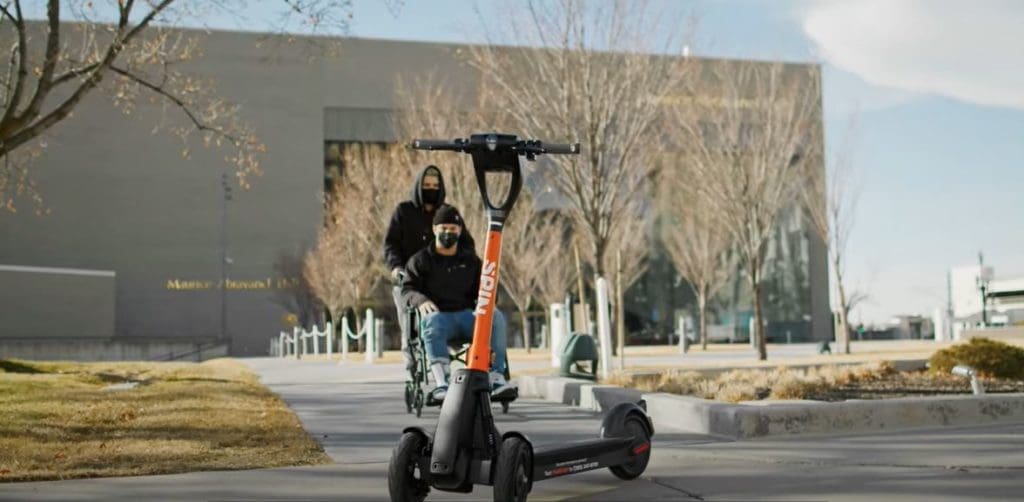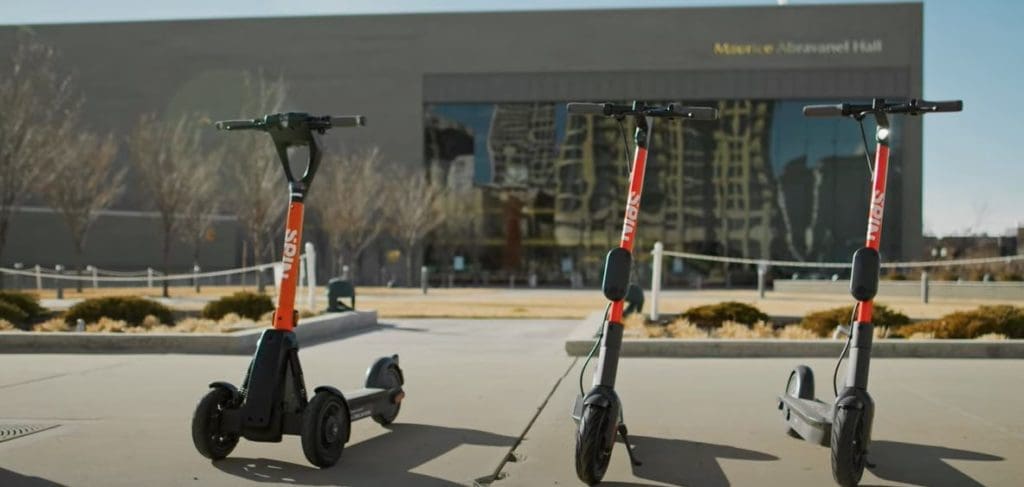Spin, Segway, Self Driving Scooters Here Now

The developers claim that this new technology could lead to a 10x increase in the number of rides per scooter per day due to two key improvements.
San Francisco / California / USA
Take a look at this self driving scooter, launched on Thursday 28th January at the Micromobility World Conference by three collaborating companies, Spin, Segway and Tortoise.
Spin was founded in San Francisco in 2017 and was wholly acquired by the Ford Motor Company in 2018.
Segway was famous back in the 2000’s for its two-wheeled Segway PT personal transporters. They ceased production in July 2020. In 2015 Segway was acquired by Ninebot – a Beijing based robotics company which makes a wide range of personal mobility devices.
Tortoise is a scooter and other micromobility product developer.
The representative from these three companies who took part in the launch were quick to stress that this T60-S200 scooter is not fully autonomous. An operator is watching vision from onboard cameras and steering the scooter remotely via computer and X-Box controller.
When the scooters are being remotely rebalanced, their maximum speed is automatically reduced to less than 8 kilometres per hour.
The developers claim that this new technology could lead to a 10x increase in the number of rides per scooter per day due to two key improvements. Firstly, more efficient and frequent rebalancing of the fleet to points of greatest demand. Secondly the scooter delivering itself to wherever the next customer is standing, while they can watch its progress on an app, just like you can see the Uber car driving towards you.
Another major advantage will be efficiently parking the scooter in the correct spaces to unblock footpaths, which is currently a huge cost to scooter operators and a major concern of city authorities.




They also predict that its stable three wheel design will open scooter share up to a much broader cross section of the community including old people. Because of its low centre of gravity they claim that the scooter has to be pushed over to an angle greater than 45 degrees before it topples.
It’s also claimed that with multiple on board video cameras, it will be less likely for members of the public to vandalise the scooters, because they could be identified via the video.
Dmitry Shevelenko of Tortoise half joked at the launch, “If we can reposition the scooters away from bars at the time of last call (for drinks), we’ll reduce a lot of the vandalism problems we’ve seen until now.”
Ben Bear, Chief Business Officer of Spin who appears in the video and also spoke at the launch event, emphasised that no matter how good the new technology, better infrastructure is essential, in particular referring to protected lanes.
The new system is to begin a trial almost immediately in the small city of Boise, Idaho USA, population 226,115, with a wider roll out depending on a successful pilot study there.

